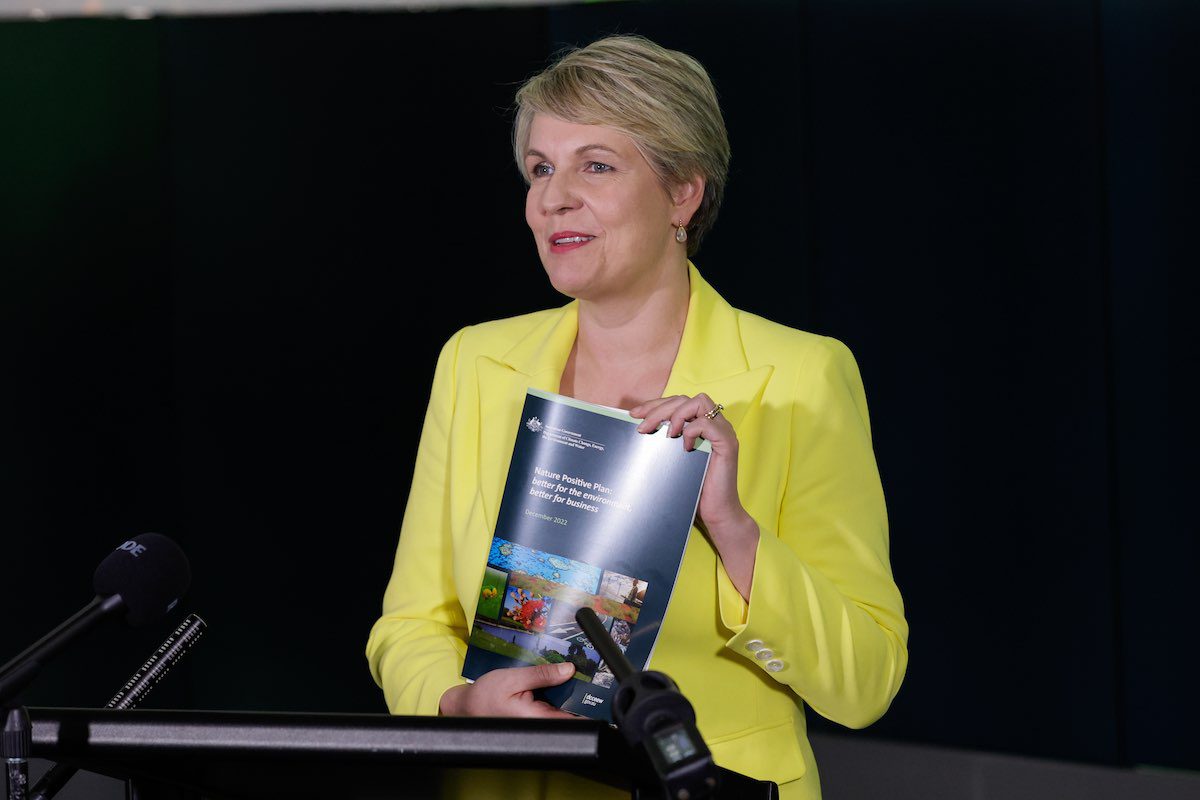Federal Labor has introduced legislation to set up Australia’s first national Environment Protection Agency that it insists will have strong new powers and penalties to prevent serious damage to nature.
In the second stage of Nature Positive Reforms introduced to federal parliament on Wednesday, the Albanese government’s Nature Positive (Environment Protection Australia) Bill 2024 sets up the new EPA to better safeguard natural habitats.
The federal body will have powers to issue stop-work orders to prevent environmental damage, while courts will be able to impose fines of up to $780 million or send people to prison for up to seven years for extremely serious intentional breaches of federal environment law.
Federal environment minister Tanya Plibersek says the EPA will examine illegal land clearing as one of its first priorities, following audits that found one-in-seven companies could be in breach of offset conditions.
Legislation will also set up the head of Environment Information Australia, an independent position that is required to provide environmental data to the public. The EIA will also release State of the Environment reports every two years instead of five.
A formal benchmark of “nature positive” will also be legislated, classed as an improvement to the diversity, abundance, resilience and integrity of an ecosystem.
“In short, nature positive means improving our ecosystems, including the species that rely on, and form part of, an ecosystem,” Plibersek said on Wednesday.
“Creating a nature positive Australia means that, across Australia, nature is repairing and regenerating rather than continue to decline.”
Plibersek says that the toughening of environmental safeguards will also allow for faster approvals and more transparency about projects, for developers.
And the minister says a third stage of reform – designed to make environmental laws “less bureaucratic” and more fit for purpose – is in the works.
“We’ve already consulted almost 100 groups, held public webinars which 3,000 people have attended, and received around 2,500 submissions. We will continue this work to get the laws right – for the environment and for business.”
But while the Albanese government describes the EPA as a “tough cop on the beat” for the environment, critics say is more like a new cop administering the same old “broken laws” that, among other things, continue to wave through fossil fuel projects in the midst of a climate crisis.
“An effective national environment law must protect nature from climate change and stop the rampant destruction of habitat,” said the Climate Council’s head of policy and advocacy Jennifer Rayner on Wednesday.
“The urgent and essential reforms that can deliver this are nowhere to be seen, with no plan for when or how the government will act on them.
“The EPA will be administering the same broken law that has waved through at least 740 fossil fuel projects to date; the same law that has overseen the clearing of millions of hectares of precious habitat,” Rayner says.
“The announcement today of yet more consultation means this reform is treading water. To make consultation constructive and meaningful, the government needs to be clear about where it is heading – will they finally put climate in this law?”
The Clean Energy Council, too, wants to see climate more clearly represented in the new laws, and used to weigh the environment department’s decision on whether or not renewable energy projects should go ahead.
“The ‘nature positive’ legal framework needs to integrate the significant benefit to biodiversity that comes from reducing greenhouse gas emissions,” says CEC policy director Nicholas Aberle.
“Climate change is one of the most serious threats to many of Australia’s threatened species and ecosystems and renewable energy is uniquely placed to mitigate that threat.
“Renewable energy projects inevitably have some local environmental impacts. But we must also consider the role renewable energy projects play in reducing climate change’s impact on biodiversity.
“It is unreasonable to consider the downside of a project without also considering its upside,” Aberle says.
The Queensland Conservation Council says the new measures don’t go far enough to stop more Australian plants and animals dying out this decade. It notes that a joint investigation found six instances of deforestation in Queensland alone that were not referred for assessment under the current EPBC Act.
“The key part of the reforms nature needs urgently is the National Environmental Standards, including a standard to develop regional plans that will lay out a traffic light approach to show where development can and cannot occur whilst setting up clear conservation zones,” says CCC director Dave Copeman.
“This is critical so we can manage the energy transition while making sure nature is prioritised.
“In an extinction crisis, we need real investigations, not tick and flick approvals,” Copeman says.
“While Minister Plibersek has demonstrated strong action with recent rejections, for too long the EPBC assessment has been long, complex and ultimately unsuccessful, with too many damaging projects approved, such as Olive Downs coal mine.”
Environment group Lock the Gate Alliance’s national co-ordinator Carmel Flint said the laws would not do enough.
“Australia’s environment laws are not fit for purpose, and the new EPA will be powerless to address the massive damage that greenhouse gas emissions from fossil fuel projects are inflicting,” she said.
“The Albanese government has folded to the demands of the WA mining and gas sector, and is squandering an opportunity to finally bring Australia’s environment laws up to a modern standard that the community expects and was promised.”
“This government has dumped their promise to fix Australia’s environment laws to make sure they protect the environment,” Greens environment spokeswoman Sarah Hanson-Young told reporters in Canberra.
“What we’re seeing today is little more than a rebranding of a branch within the environment department. A few tweaks on the letterhead, a new business card, but not much more.”
WWF-Australia’s Darren Grover says that while welcome, the new national EPA is not a silver bullet that will prevent extinctions on its own.
“The government now needs to finish the job and deliver an ambitious and comprehensive package of reforms this term,” Grover says.
“This should include strong national standards to provide certainty to states and territories, businesses, communities, and Traditional Owners.
“Otherwise the EPA will be overseeing the same broken laws that have allowed millions of hectares of threatened species habitat to be destroyed.
“If we don’t take action now the loss to Australia will be irreversible.”
With additional reporting from Andrew Brown, AAP








